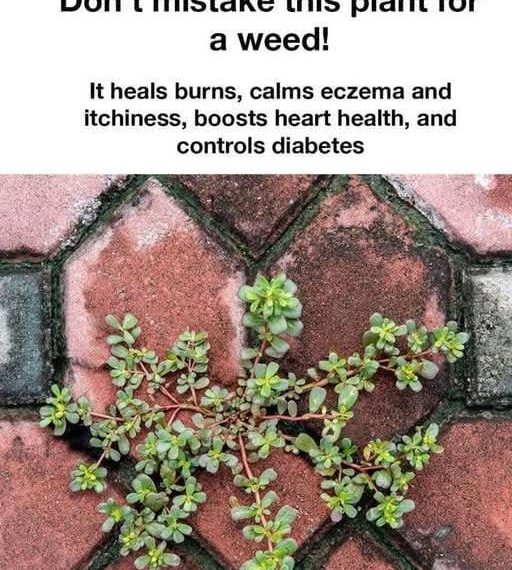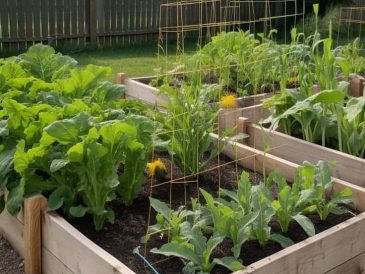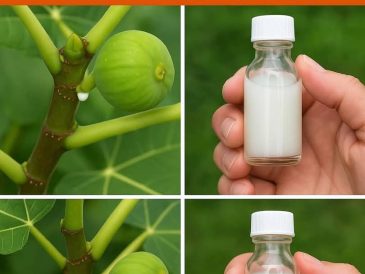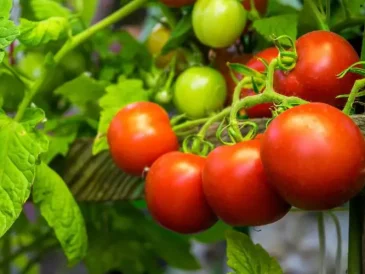If you’ve ever yanked a low-growing, fleshy-leaved plant from your garden thinking it was just another weed, you might have unknowingly thrown away a nutritional powerhouse. That plant is called purslane (Portulaca oleracea), and it’s time we give this humble green the spotlight it deserves.
Purslane is often dismissed as an unwanted invader in gardens and sidewalks. But in truth, it’s an edible succulent packed with more nutrients than many cultivated greens. Let’s dive into the amazing benefits of this misunderstood super plant.
🌿 What Is Purslane? A Weed or a Wonder?
Purslane is a low-growing, succulent-like plant with small yellow flowers and thick, spoon-shaped leaves. It’s found growing wild across the world — in gardens, driveways, fields, and cracks in the pavement.
Though many see it as a weed, purslane has been used in traditional medicine and cuisine for centuries in countries like Greece, India, China, and Mexico.
Fun fact: Purslane is listed by the World Health Organization as one of the most nutritionally valuable leafy vegetables.
Nutritional Powerhouse: What’s Inside Purslane?
Here’s what makes purslane so impressive:
| Nutrient | Amount (per 100g) | Benefit |
|---|---|---|
| Omega-3 fatty acids (ALA) | 400 mg+ | Heart & brain health |
| Vitamin A | 1320 IU | Eye health, immunity |
| Vitamin C | 21 mg | Antioxidant, skin health |
| Magnesium | 68 mg | Nerve and muscle support |
| Potassium | 494 mg | Blood pressure regulation |
| Iron | 1.99 mg | Red blood cell support |
1. Brain-Boosting Omega-3s
Purslane is one of the only plant sources rich in alpha-linolenic acid (ALA), a type of omega-3 fatty acid essential for brain and heart function.
- Helps reduce inflammation
- May improve cognitive performance
- Supports cardiovascular health
If you’re plant-based and looking for an omega-3 source, purslane is a fantastic addition to your diet.
❤️ 2. Antioxidant-Rich for Overall Wellness
Purslane is loaded with antioxidants, including glutathione, vitamin E, C, and beta-carotene, which help:
- Neutralize free radicals
- Prevent cell damage
- Slow down aging processes
A 2014 study in BioMed Research International found that purslane extract had significant antioxidant effects in lab models.
3. Gut-Friendly Fiber
With its rich fiber content, purslane can support a healthy digestive system. It:
- Promotes regular bowel movements
- Aids in gut flora balance
- May assist in blood sugar regulation
Adding purslane to your meals is an easy way to boost fiber intake naturally.
🦴 4. Supports Bone and Muscle Health
Thanks to its content of magnesium, calcium, and potassium, purslane supports:
- Bone density
- Muscle contraction and relaxation
- Electrolyte balance
It’s especially beneficial for athletes or people prone to cramps or fatigue.
🥗 5. Surprisingly Delicious and Easy to Use
Purslane has a mildly tangy, lemony flavor and a crisp texture. You can eat it:
- Raw in salads or sandwiches
- Sautéed with garlic and olive oil
- Blended into smoothies
- Pickled like cucumbers
It pairs beautifully with tomatoes, cucumbers, yogurt, eggs, and feta cheese.
🌱 How to Harvest and Identify Purslane
Identification Tips:
Identification Tips:
- Low-growing, mat-forming habit
- Fleshy, smooth leaves
- Reddish stems
- Small yellow flowers
⚠️ Don’t confuse it with the toxic spurge plant, which looks similar but has milky sap and non-succulent leaves.
Harvesting:
- Clip young stems and leaves in the morning
- Rinse well to remove dirt and dust
- Use immediately or refrigerate for 3–5 days
🌿 Growing Purslane at Home
Good news! Purslane is super easy to grow.
- Sow seeds directly in warm soil
- Prefers sunny, dry conditions
- Grows well in pots or garden beds
It’s drought-tolerant, grows fast, and practically thrives on neglect.
Historical & Medicinal Use
Purslane has been used in Ayurveda and Traditional Chinese Medicine for:
- Detoxification
- Soothing inflammation
- Cooling fevers
- Treating wounds and burns
The mucilaginous gel from the leaves is also applied to skin rashes, bites, and minor wounds.
♻️ Sustainable, Wild, and Free
Because it grows wild and needs no fertilizers, pesticides, or special care, purslane is an eco-friendly superfood.
- No need for packaging or transport
- Grows in urban areas
- Reduces food waste when foraged instead of discarded
Conclusion: Embrace the Power of Purslane
Purslane is not a pesky weed – it’s a nutrient-dense, medicinal, and culinary treasure hiding in plain sight. Whether you forage it, grow it, or buy it at a farmer’s market, this humble plant deserves a place in your kitchen and your wellness routine.
Next time you see it in your garden — don’t pull it, eat it!
FAQs
1. Is it safe to eat purslane every day?
Yes, in moderate amounts. It’s rich in nutrients and low in calories.
2. Can children eat purslane?
Absolutely! Just make sure it’s properly cleaned and not confused with look-alikes.
3. Does purslane contain oxalates?
Yes, in small amounts — so those with kidney stone concerns should consume it in moderation.
4. Can I cook purslane like spinach?
Yes! It wilts just like spinach and is great sautéed or added to soups.
5. Where can I find purslane seeds?
Many online seed companies sell them, or you can collect seeds from wild plants.





